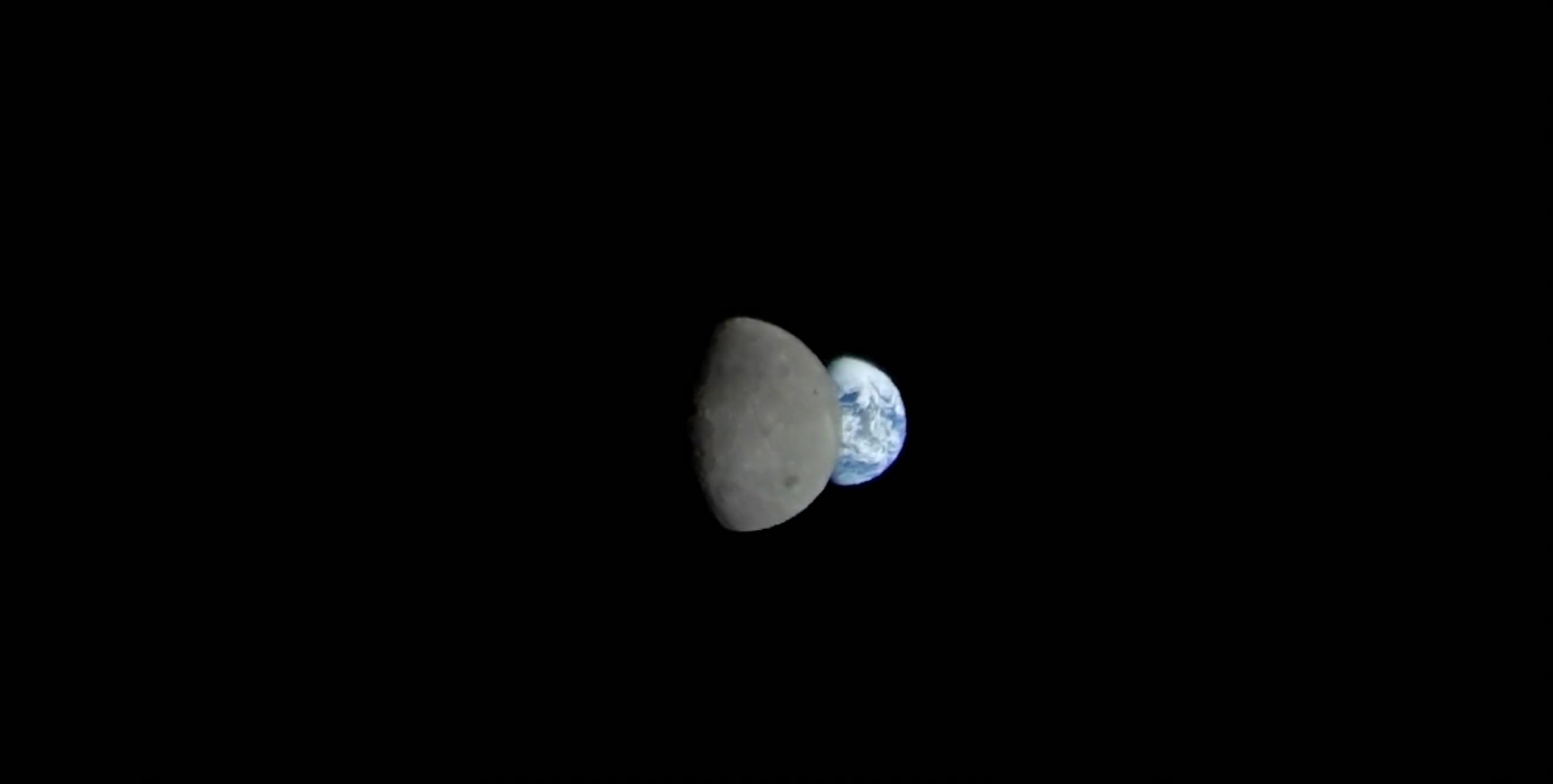
Themes of perspective are on the minds of many this interim week between several major holidays and the New Year. Maybe NASA’s newly-published view of the Moon and a distant Earth is offering someone a perspective about humanity’s place in the cosmos.
Earth’s disk disappears behind the Moon, and then emerges on the other side, in the new video from Day 13 (November 28) of the Artemis I Orion capsule’s 26-day uncrewed mission. Orion recently took the premiere flight of NASA’s Artemis Program, a rocketeer dream for the 21st century meant to build upon Apollo’s human spaceflight legacy. And on that halfway-point day, Orion set a spaceflight record when it reached its farthest distance from Earth — 268,563 miles from our home planet.
The new video offers an otherwise unobtainable perspective of the Moon. Orion’s cameras captured the “dark side” of the Moon, the textured, heavily-cratered landscape of the lunar farside that we can’t see from Earth. The Moon shows Earth the same face because it is tidally locked with our planet. The video also plays “900x the actual speed” of their real motions, and appear to wobble “because the camera was in a fixed position on the spacecraft's solar array while the Moon and Earth continued to move in their orbits relative to Orion,” a reply tweet from NASA explains.
Where we’ve gone, where we’ll go
In the Saturday tweet, NASA frames the present with the past. The video’s caption mentions the iconic Apollo 17 photo, “Blue Marble.”
A series of delays beleaguered the launch of Artemis I this year. And by chance, its Moon visit overlapped with a special spaceflight anniversary. As Orion was heading home on December 7, a day out from the lunar sphere of influence, NASA celebrated the 50th anniversary of the last Apollo launch. Astronauts Eugene A. Cernan, Ronald E. Evans, and Harrison H. Schmitt were bidding farewell to Earth, and gazing upon its glory, on that day half a century ago.
Perspectives have changed since then. NASA leadership has said the modern Moonshot will reproduce Apollo’s moonwalks, but with a major twist. Artemis will place the first woman and the first person of color onto the Moon, and with that, break up the monotony of what lunar astronauts have historically looked like.
Once we get there, the question might shift to, Why? If Artemis III delivers the first 21st century lunar bootprints, what’s next? What will the Moon be to us? Increasingly complex missions at the lunar surface may only be sustained by lunar extraction and mining. A document outlining principles for “civil exploration and use of outer space,” called the Artemis Accords, got its 22nd and 23rd signatures this month. But it’s non-binding. Is the Moon destined to become another playground for geopolitical bravado, and do we risk irrevocably altering one of humanity’s most essential heritage sites, for the sake of “going back”?
And once astronauts go back, maybe the Moon won’t be enough. With a whole international fleet of robotic explorers on Mars, the Red Planet is slowly unraveling its mysteries, and enticing space agencies to spend their energies getting orbiters, rovers, and people to its alien landscapes. NASA hopes astronauts will reach Mars on later Artemis missions.
A lovely sight
As we ruminate about how far to go, and how far we’ve come, there’s a simple pleasure in pretty pictures from space. Even the most casual observer may light up when faced with a darling picture of our blue planet playing peekaboo with the Moon, both aloft in the velvety blackness of the Universe.
And as Orion made its way to a record-breaking distance from Earth, it gave us this brilliant perspective.







